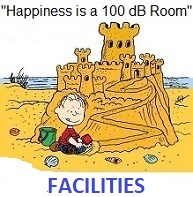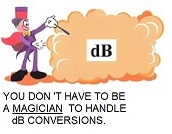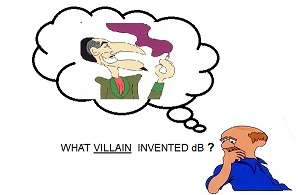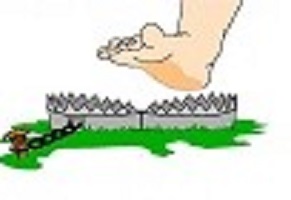

 . .
WE SUPPORT THE BRAVE PEOPLE OF THE UKRAINE . .
. .
WE SUPPORT THE BRAVE PEOPLE OF THE UKRAINE . .



Click on these GUIDES to navigate our site:
 ..
..
 ..
..
 ..
..
 ..
..
 ..
..

USED RF SHIELDED ROOM FOR SALE
A used but very well cared for, 100dB R.F. SHIELDED ROOM
FOR A TOUR OF THE ROOM, CLICK RIGHT HERE
The modular, bolt-together design used in shielded rooms like this one has the FOLLOWING BENEFITS:
* It allows for disassembly, transportation, and reassembly by FOUR FIT,
WELL TRAINED* construction workers.
If your construction crew has never assembled a room like this, send them to our shielded room construction course. For more info,
CLICK HERE
* Modular rooms can also be expanded, made smaller, or modified to meet emerging
requirements.
*
) Bolt-together rooms like this one are MODULAR: depending on your emergent requirements, they can be expanded or made smaller, two rooms can be combined into one.
WHAT WE DO: Despite our Company's unique name, we do a lot more than
EMission
SECurity
( " EMSEC ". )
On this web site, we will define "TEMPEST" as: Troublesome
Electro
Magnetic
Problems and their
Elimination
STrategies
We build electronic devices that meet the Electromagnetic protection requirements of the
United States, European Union, and other NATO governments.
We have done this successfully for over thirty five years, and we can
SHOW YOU
how to do the same.
We are proud to say that some of our custom products have been personally used by the Secretary of Defense and by the President of the United States.
We are experts in the control of all types of Electromagetic Environmental Effects (E3), including: HEMP, EMP, SGEMP, SREMP, HERF, HERO, TSCM, EMI, QRM, RADHAZ, and others.
If you would like to know more about these and other electromagnetic threats and phenomena,
CLICK HERE.


IF SO, < CLICK HERE >
THE "WIRELESS WORKBOOK,"
"PROBLEMS AND SOLUTIONS IN WIRELESS COMMUNICATIONS AND ELECTROMAGNETIC COMPATIBILITY"
will show you how to make RF computations quickly and accurately
WITHOUT A CALCULATOR.
TRY IT NOW!
ARE YOU ABOUT TO BUY A SHIELDED ROOM??

* AVOID THE MOST COMMON PITFALLS
* SAVE TIME
* SAVE
MONEY!
*AND GET A GOOD, SOLID LONG LASTING ROOM THAT WILL GIVE YOU MANY YEARS OF TROUBLE-FREE SERVICE.
THE SHIELDED ENCLOSURE HANDBOOK
is the definitive guide for the buyer, builder, tester and user of electromagnetically shielded enclosures.
* High Energy Electromagnetic Pulse ( HEMP ) hardening.
* Electromagnetic Compatibility TEST CAPABILITY TO 300 GIGAHERTZ
* Electromagnetic Compatibility .testing of cybersecurity intelligence surveillance and reconnaisance ISR systems .
* iNARTE Certified
* Our Acoustic testing of cybersecurity intelligence surveillance and reconnaisance ISR systems . Capability meets all of the stringent requirements of MIL-STD-1474D
TEMPEST INC. offers EMSEC, Protection against HIGH ALTITUDE ELECTROMAGNETIC PULSE ( EMP / HEMP ), attacks and HIGH POWER MICROWAVE ( HPM ) attacks, Electromagnetic Compatibility testing of cybersecurity intelligence surveillance and reconnaisance ISR systems, . and design services in accordance with current US Department of Defense (DoD) NATO, Military, Australian and European Community Requirements.
We offer:
1. Fast, effective service by Certified Personnel.
2. Cursory testing: find and to fix problems quickly.
with proven expertise and facilities to3. Effective TEMPEST security and Electromagnetic Compatibility design of cybersecurity intelligence surveillance and reconnaisance ISR systems modifications when needed.
4. Certification testing of cybersecurity intelligence surveillance and reconnaisance ISR systems . in accordance with all U.S. TEMPEST security standards, US Department of Defense (DoD) Military Electromagnetic Compatibility (EMC) Standards, and the civilian EMC standards of:
and European Community Directive 89/336/EEC ( CE Mark ),
The Australian Communications and Media Authority ( ACA / ACMA ) " C-tick mark."
5. Cooperative arrangements with European Electromagnetic Compatibility Laboratories ("Competent Bodies")
7. Shielding effectiveness testing.
8. Electromagnetically shielded enclosures.
This site has been made fully accessible to the handicapped, in accordance with Section 508 of Title 29 of the United States Code, Paragraph 794d, ( The Rehabilitation Act.) see http://www.Section508.gov ]
© COPYRIGHT 2022 BY TEMPEST INC.
If you have not done it before, you might think that building an RF Shielded Room, also called an ” electromagnetically shielded room “, (or in Canada: ) “ a walk in shielded enclosure ” would not be a particularly difficult construction project. It is far from easy. Here is why:
The problem starts with the term “ shielded room “ It is misleading. A shielded room is not just a room, even though looks like one. A shielded room is actually an electronic instrument, like an antenna.
If you don’t believe this, read on: P>Many competent construction companies can build a safe, solid, and attractive steel room for you on your site. The smart ones would even use shielded room parts or kits that are available from some shielded room manufacturers .
This is a good start to your shielded room project, but it is not enough.
Unfortunately, that room will probably will have plenty of hard to find electronic leaks. Those leaks can take a long time to find and fix. A shielded room may look like a small construction project, but actually it is a large electronic assembly project. The construction techniques are significantly different from those of any other type of construction.
Time spent up front determining what you need will be your best investment. Here are some basics:
Most testing standards don’t specify the amount of shielding effectiveness your room must provide. They only indirectly define the ambient levels inside the room. It makes sense to measure what the ambients actually are, then figure out what they have to be and compare. Add at least 20 dB as a margin for error.
Shielding effectiveness tests use electric fields (up to 30 MHz), magnetic fields (up to 1 MHz), and plane waves (>30 MHz). Electric fields and plane waves can be attenuated by aluminum sheets, metal foil, conductive wallpaper, and conductive paint. Magnetic fields require iron, steelor special alloys like mumetal.
Find out if you really need to attenuate those magnetic fields.
Shielding effectiveness tests are easy to understand. Read them and pick the one that makes most sense to you. Some of the current standards are MIL-STD-285, NSA 65-6, NSA 94-106, and NSA 73-2A.. Actually performing these tests is another story. There are more than a few techniques that are essential to getting accurate information. These are unclassidfied, but not widely availale. in =============================================================================
If done correctly, customizing these standards, deleting tests, and lowering requirements can save money. Don’t do it yourself. Consult an expert who is neither the builder nor the tester, Better yet, consult US! sales@tempest-inc.com
Selecting the Shielding Techniques
A bolt-together room is a reliable, mature technology. If assembled carefully, it can provide 100 dB of attenuation at most frequencies. Welded rooms last a long time and provide the most attenuation. But they can be pricey.
Foil rooms are lightweight. Their seams are sealed with foil tape. When the tape gets old, it starts to peel, and your room will develop leaks. Also, it is very easy to accidentally poke holes in the foil. Conductive wallpaper and conductive paint have the same problems as foil. Foil, wallpaper, or paint seem to be inexpensive, but their labor costs are almost the same as those of bolt-together rooms. And you still have to buy a standard shielded door, shielded vents, and other accessories.
Laying Out the Room
Keep it simple. Complex designs are deadly in this business. Still, you need a door, two vents, electrical power, and lighting per local building codes.
Make your room freestanding. That way you avoid accidental grounds that produce high ambients inside at some frequencies.
Your room should have its own separate ground, using an isolation transformer. Don’t use your building’s ground; you will pick up noise from other equipment in the building.
The best ground is a rod driven through the lowest floor ( ground or basement,) into the soil, and down to the water table. Don’t use a long ground cable. It acts like an inductor higher frequencies, or an antenna at others. This gives you: (1) a poor ground and (2) higher ambient noise in the room.
It can also send you chasing around looking for an “ leak” that does not exist.
SELECTING THE BUILDER'
Building shielded rooms is not taught at any trade school or university. ( except here, at TEMPEST INC.)There are few books on the subject (besides ours,) and no special certification is required. Most knowledge resides in the heads of people who have built many rooms and have learned by trial and error what works and what doesn’t.
So, how do you know whom to pick? I suggest you check the following:
*Financial and technical references.
*The experience of the project engineer. He should have built many shielded rooms.
*The experience and training of the proposed construction personnel. Unlike most trades, there is no apprenticeship program for the craftsmen who actually put your room together.
The assembly techniques are very different from those of ordinary construction. Some of them are counterintuitive—opposite to what people do in all other construction. It is a unique trade: part carpentry, part plumbing, and part electronic assembly.
Getting the Best Price
To get the best price, review your design with the builder. Try to reduce the builder’s risk. If you buy a bolt-together room and demand 100 dB, the builder may spend a lot of time and money trying to get that last 5 dB. On the other hand, if you only ask for 80 dB, the risk reduces greatly, and the price should come down.
Testing the Room
The tester should be your safeguard. Testing rooms is a tough business. Since there is no certification program, anyone can claim to be a tester. This makes the business extremely competitive, with most contracts simply going to the lowest bidder.
To pick a good tester, check references, experience, and credit rating. Look for a certified EMC engineer or technician. In the most common arrangement, the tester is hired by the builder. The builder needs to get the room passed quickly, because every extra day spent fixing leaks costs him money. As a result, there is a lot of pressure on the tester to do a quick, superficial job.
To avoid that conflict of interest. Have the tester work for you. And don’t waste your time spot-checking your tester’s work. The odds of you detecting that last construction-created leak are not good.
Maintaining Your Investment:
=========================================================================
Perform extensive maintenance on your room annually, and retest it every two to three years. In the interim, there are some simple checks you can do.
For example, walk into your room with an FM radio and close the door. If you can still hear the radio, you have a big leak somewhere.
The same test can be performed with a cell phone, but not so with a walkie-talkie. Some walkie-talkies can actually blast through a 100-dB room.
Look for broken or dirty finger stock on your door. Periodically check and tighten the bolts if necessary.
Looking at New Trends
Many shielded rooms now are built with microwave-absorbing material on the walls to comply with new requirements like MIL-STD-462D. New techniques also are available for shielding entire buildings. And there are lightweight rooms and shielded tents made of conductive fabric.
Summary
A shielded room actually is a piece of electronic equipment like an antenna. To be an effective addition to your company, it must be designed with the help of an expert, assembled by trained technicians, tested by a professional, and maintained periodically.
About the Author
Louis Gnecco is the president of Tempest Inc. He is a Certified Electromagnetic Compatibility Engineer and a Certified Tempest Professional, Level II. His professional affiliations include the National Aeronautics and Space Administration from 1966 to 1971 and the Department of Defense from 1971 to 1985. Mr. Gnecco holds a B.S.E.E. from Manhattan College and an M.S.E.E. from George Washington University. Tempest Inc., 112 Elden St., Herndon, VA 20170, (703) 836-7378, www.tempest-inc.com.
Copyright 2022 by TEMPEST INC.
=========================================================================================================================================================================